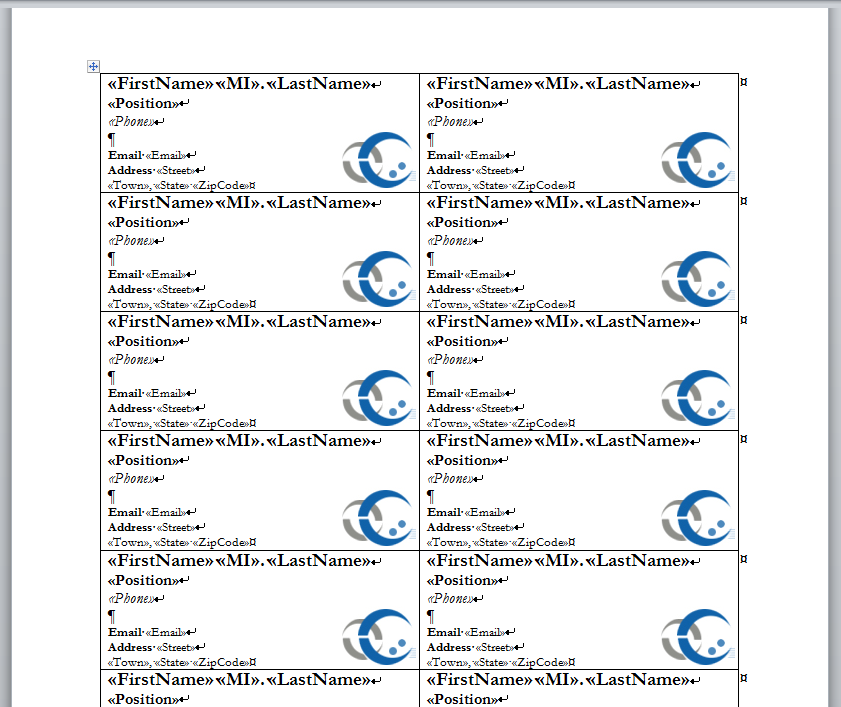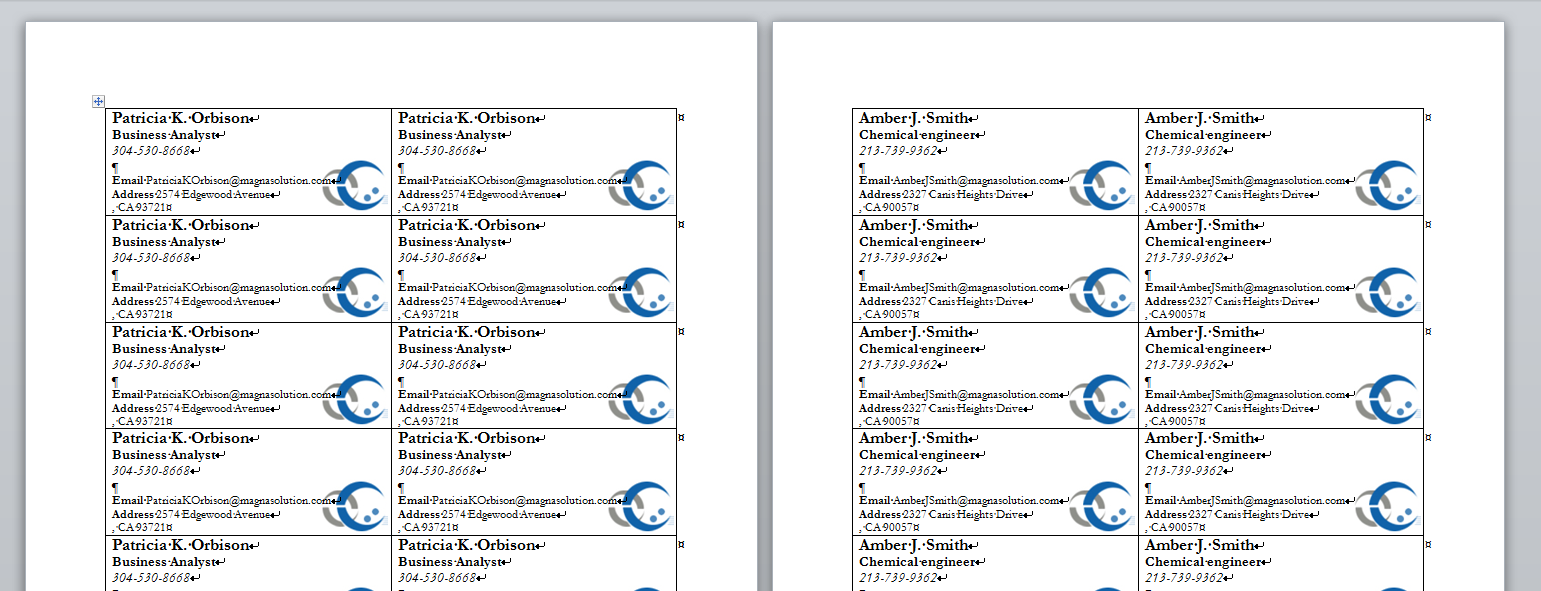Table of Contents |
|---|
Intro
The WordTemplate object is used for template-driven document generation. This object opens a WordWriter template file, populates it with data from a specified data source, and generates a new Word document. The WordTemplate object provides the ability to import multiple rows of data by repeating sections of a document for each row, or using the entire document as a repeatable section.
This tutorial covers how to use WordTemplate.SetMailMerge to use the entire document as a repeatable section and then how to use NEXT fields to populate a sheet of business labels, over multiple pages.
Business Label Template
The template file looks like this:

There is a table with fields for an employee's FirstName, MI, LastName, Phone, Email, Street, City, State, and ZipCode. These fields are repeated for an entire page in the document. The goal is to populate all of the business labels, but spill onto multiple pages as necessary.
Unlike with repeat blocks that are populated with WordTemplate.SetRepeatBlock, which require bookmarks to determine what part of the document is repeated, WordTemplate.SetMailMerge treats the entire document as a repeat block, so it is not necessary to add bookmarks when using SetMailMerge.
Adding a WordWriter Reference in Visual Studio
To create a .NET project and add a reference to the WordWriter library:
- Open Visual Studio and create a .NET project.
- Add a reference to the SoftArtisans.OfficeWriter.WordWriter.dll
SoftArtisans.OfficeWriter.WordWriter.dllis located under Program Files > SoftArtisans > OfficeWriter > dotnet > bin.
Writing the Code
This part of the tutorial will cover how to set up the WordTemplate code to bind the data to the template. This assumes a basic knowledge of WordTemplate and how to bind data to Word templates.
1. Include the SoftArtisans.OfficeWriter.WordWriter namespace in the code behind
2. Create a new WordTemplate object and open the template file.
3. Get the employee data for the business labels.
This call is to a helper method GetCSVData that parses the CSV files and returns a DataTable with the values.
4. Use WordTemplate.SetMailMerge to bind the employee data to the template.
Recall that SetMailMerge treats the entire document as a repeat block. This means that the merge fields in the document will need to match the column names of the data source. If there are any stray merge fields in the document, WordWriter will throw an error.
5. Process and save the template file.
The completed code should look like this:
Run the code. You will notice that each employee has a page of business label's with that particular employee's data.

This is the intended SetMailMerge behavior, as the entire document was repeated for each row of data. In the next section we will incorporate next fields so that only one business label is made for each employee.
